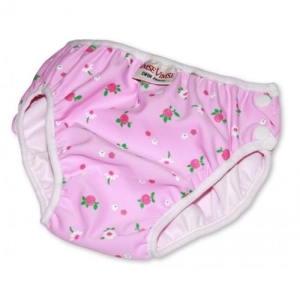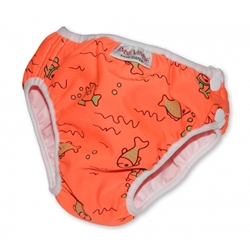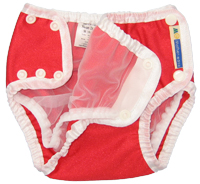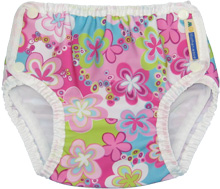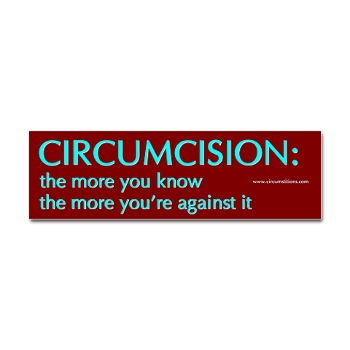Welcome to the July 2010 Carnival of Nursing in Public
This post was written for inclusion in the Carnival of Nursing in Public hosted by Dionna and Paige at NursingFreedom.org. All week, July 5-9, we will be featuring articles and posts about nursing in public (“NIP”). See the bottom of this post for more information.
***
I remember the first time someone told me to cover up when I was breastfeeding my infant daughter. I was a new mom and J was less than 6 months old. Thinking about it today brought up some tears and some lingering anger and sadness.
It was difficult to breastfeed in the early weeks. Yes, weeks. I had a terrible time figuring out how to help J get a good latch. I couldn’t figure out how to get her un-latched for a long time either, so I have some experience with painful nipple abrasions. And the only thing I figured out early was that I needed to see what was going on in order to get it right.
Translated, this means I couldn’t cover up AND nurse my baby successfully. I don’t know why some women can and I couldn’t- maybe I wasn’t coordinated or experienced enough. It really doesn’t matter now but back then I was very sensitive about it. I wanted to be as modest as possible.
That particular day, as I fed my baby on the outside patio of my daughter’s daycare center, one of the staff members came outside with a receiving blanket and offered it to me to cover my baby’s head. I thought she was making a friendly offer. I declined, thanking her politely. She informed me that the center director had a complaint from a staff member that I had fed my daughter outside the day before, and that I could choose to nurse inside or cover up- period.
I didn’t know what to say. I was unprepared to be challenged in this setting. These were the women caring for my exclusively breastmilk-eating baby. These were the women who supported my choice to breastfeed by calling me when the day was near its end and my baby was hungry so I could come early and avoid a bottle-feeding that might throw off the balance of our schedule. These were women who verbally offered support and encouragement as I made the transition back to work, but maintained 2 nursing sessions in this room: at lunch break and after work. Every day.
Had the sky turned purple too? Everything turned askew in that moment.
I tried to assert my right to breastfeed in public (Florida has a law and I knew it, but was unable to fully quote it) and this challenge was met with an accusation that astonished me even further in disbelief.
“The Kindergarten class is outside playing now. One of the students asked the teacher what you were doing with your baby yesterday and the teacher was uncomfortable responding and did not know what to say. So as long as there are students playing outside, you’ll have to stay inside or cover up.”
She didn’t know what to say? Seriously? How about, “She’s feeding her baby.” Seems simple enough now, but that day, I was so astonished by the situation I had no obvious replies.
The staff member went on to say that some people are offended and uncomfortable with breastfeeding and I have to be conscious of that and take other people’s feelings into consideration.
I was angry by then. I went inside. Really, I didn’t have a choice. Remember the latch problems I mentioned? Well, because I didn’t ever use a cover, my daughter wouldn’t allow a cover. She’d just rip it off any time I bothered to try. Plus it was too hot to cover her head, whether or not she was eating, and her comfort mattered more than mine in that moment.
I asked if bottle-feeding would be banned on the porch if I complained that it offended me? They did not understand my comment or my hurt feelings. Friends and co-workers also didn’t understand. One co-worker was even offended by my comparison of banning bottle-feeding in public!
Babies deserve to eat when they are hungry and moms deserve to feed their babies however, whenever, and wherever they wish, even if it means someone might see; even if it means (gasp!) children might see. Normalizing breastfeeding means more people, adults and children, must be exposed to it on a regular basis in the course of their everyday lives.
If I had it to do over again, I might have still made the decision to go inside. But I would have asserted my legal right by filing a written complaint with the daycare center, forcing them to acknowledge their responsibility to all breastfeeding babies and moms using their service. I might also have asked to speak one-on-one with the staff member in question and give her some easy responses for the children she cared for. This is part of the bigger problem breastfeeding moms face.
The staff member was obviously uncomfortable with the idea that her students would be going home with new information their parents had not provided about feeding babies. She was worried about a 5-6 year old talking non-stop to an uncomfortable or embarrassed parent who isn’t prepared to answer additional questions about breastfeeding. Breastfeeding is not something to be embarrassed about. In cultures where breastfeeding is the norm, children simply don’t ask what mothers are doing with their babies, because they already know what breasts are for. And parents understand the dual purpose they can serve without embarrassment.
After this incident, I never did cover up around town, and occasionally people thought I should and told me so. (I did once, on a plane- but that was to avoid toddler distraction more than to address the feelings of those around me in such close quarters.) I made it a point to nurse both of my girls wherever we were when they were hungry- at the mall, at the park, at restaurants, at home, at Chuck-E-Cheese. I did this modestly (in my opinion) but I did not cover up. It just didn’t work for us.
Today my children often notice and remark positively on breastfeeding moms. And I keep cards in my purse to thank mothers for breastfeeding in public. These cards also include the FL statute language to help support mothers in their decision to feed their baby wherever they are. I’m glad to be part of helping other moms feel good about their decision to nurse their children in public.
**I am still nursing, but only at home these days, as it remains part of our bedtime routine, but not something we do during the normal course of the day.

Welcome to the Carnival of Nursing in Public
Please join us all week, July 5-9, as we celebrate and support breastfeeding mothers. And visit NursingFreedom.org any time to connect with other breastfeeding supporters, learn more about your legal right to nurse in public, and read (and contribute!) articles about breastfeeding and N.I.P.
Do you support breastfeeding in public? Grab this badge for your blog or website to show your support and encourage others to educate themselves about the benefits of breastfeeding and the rights of breastfeeding mothers and children.
This post is just one of many being featured as part of the Carnival of Nursing in Public. Please visit our other writers each day of the Carnival. Click on the links below to see each day’s posts – new articles will be posted on the following days:
July 5 – Making Breastfeeding the Norm: Creating a Culture of Breastfeeding in a Hyper-Sexualized World
July 6 – Supporting Breastfeeding Mothers: the New, the Experienced, and the Mothers of More Than One Nursing Child
July 7 – Creating a Supportive Network: Your Stories and Celebrations of N.I.P.
July 8 – Breastfeeding: International and Religious Perspectives
July 9 – Your Legal Right to Nurse in Public, and How to Respond to Anyone Who Questions It

